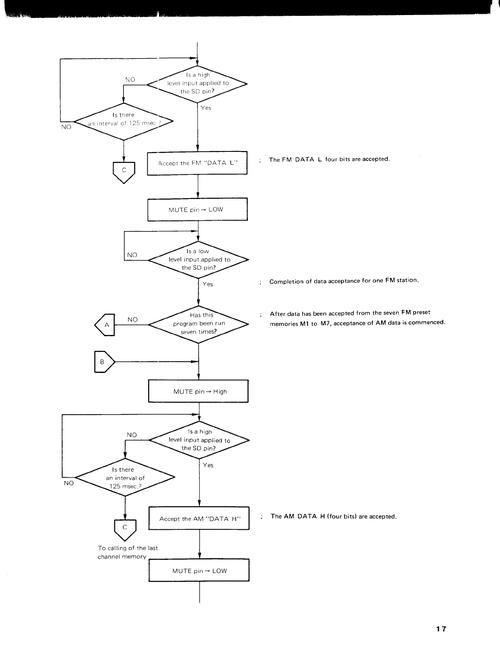您所在的位置:首页 - 热点 - 正文热点
编程经典案例
![]() 初泽
2024-04-19
【热点】
688人已围观
初泽
2024-04-19
【热点】
688人已围观
摘要**Title:BuildingaRemoteMethodInvocation(RMI)ApplicationinJava****IntroductiontoRMI:**RemoteMethodInv
Title: Building a Remote Method Invocation (RMI) Application in Java
Introduction to RMI:
Remote Method Invocation (RMI) is a mechanism in Java that allows an object residing in one system (usually a server) to invoke methods on an object residing in another system (usually a client). RMI enables distributed computing in Java, where objects can interact with each other across different JVMs (Java Virtual Machines) running on different hosts.
Objective:
In this tutorial, we'll create a simple RMI application in Java to demonstrate how RMI works. We'll build a server that provides a service to add two numbers remotely, and a client that invokes this service.
Step 1: Define the Remote Interface:
```java
import java.rmi.Remote;
import java.rmi.RemoteException;
public interface Calculator extends Remote {
int add(int a, int b) throws RemoteException;
}
```
Step 2: Implement the Remote Interface on the Server Side:
```java
import java.rmi.RemoteException;
import java.rmi.server.UnicastRemoteObject;
public class CalculatorImpl extends UnicastRemoteObject implements Calculator {
protected CalculatorImpl() throws RemoteException {
super();

}
@Override
public int add(int a, int b) throws RemoteException {
return a b;
}
}
```
Step 3: Create the Server:
```java
import java.rmi.registry.LocateRegistry;
import java.rmi.registry.Registry;
public class Server {
public static void main(String[] args) {
try {
Calculator calculator = new CalculatorImpl();
Registry registry = LocateRegistry.createRegistry(1099);
registry.rebind("CalculatorService", calculator);
System.out.println("Server started...");
} catch (Exception e) {
System.err.println("Server exception: " e.toString());
e.printStackTrace();
}
}
}
```
Step 4: Create the Client:
```java
import java.rmi.registry.LocateRegistry;
import java.rmi.registry.Registry;
public class Client {
public static void main(String[] args) {
try {
Registry registry = LocateRegistry.getRegistry("localhost", 1099);
Calculator calculator = (Calculator) registry.lookup("CalculatorService");
int result = calculator.add(5, 3);
System.out.println("Result: " result);
} catch (Exception e) {
System.err.println("Client exception: " e.toString());
e.printStackTrace();
}
}
}
```
Step 5: Compile and Run the Server and Client:
Compile all the Java files.
Start the server using `java Server`.
Run the client using `java Client`.
Conclusion:
In this tutorial, we've created a simple RMI application in Java. The server provides a remote service for adding two numbers, and the client invokes this service remotely. RMI simplifies distributed computing in Java by allowing objects to communicate across different JVMs seamlessly.
Tags: 城市与文明 战网通行证 龙图腾女孩 大唐仙妖劫 使命召唤8破解补丁
版权声明: 免责声明:本网站部分内容由用户自行上传,若侵犯了您的权益,请联系我们处理,谢谢!联系QQ:2760375052
上一篇: 汇编语言程序三种基本结构
下一篇: 氪chart编程教程
最近发表
- 特朗普回应普京涉乌言论,强硬立场引发争议与担忧
- 民营企业如何向新而行——探索创新发展的路径与实践
- 联合国秘书长视角下的普京提议,深度解析与理解
- 广东茂名发生地震,一次轻微震动带来的启示与思考
- 刀郎演唱会外,上千歌迷的守候与共鸣
- 东北夫妻开店遭遇刁难?当地回应来了
- 特朗普惊人言论,为夺取格陵兰岛,美国不排除动用武力
- 超级食物在中国,掀起健康热潮
- 父爱无声胜有声,监控摄像头背后的温情呼唤
- 泥坑中的拥抱,一次意外的冒险之旅
- 成品油需求变天,市场趋势下的新机遇与挑战
- 警惕儿童健康隐患,10岁女孩因高烧去世背后的警示
- 提振消费,新举措助力消费复苏
- 蒙牛净利润暴跌98%的背后原因及未来展望
- 揭秘缅甸强震背后的真相,并非意外事件
- 揭秘失踪的清华毕业生罗生门背后的悲剧真相
- 冷空气终于要走了,春天的脚步近了
- 李乃文的神奇之笔,与和伟的奇妙转变
- 妹妹发现植物人哥哥离世后的崩溃大哭,生命的脆弱与情感的冲击
- 云南曲靖市会泽县发生4.4级地震,深入了解与应对之道
- 缅甸政府部门大楼倒塌事件,多名官员伤亡,揭示背后的故事
- 多方合力寻找失踪的十二岁少女,七天生死大搜寻
- S妈情绪崩溃,小S拒绝好友聚会背后的故事
- 缅甸遭遇地震,灾难之下的人间故事与影响深度解析
- 缅甸地震与瑞丽市中心高楼砖石坠落事件揭秘
- 揭秘ASP集中营,技术成长的摇篮与挑战
- 徐彬,整场高位压迫对海港形成巨大压力——战术分析与实践洞察
- ThreadX操作系统,轻量、高效与未来的嵌入式开发新选择
- 王钰栋脚踝被踩事件回应,伤势并不严重,一切都在恢复中
- 刘亦菲,粉色花瓣裙美神降临
- 三星W2018与G9298,高端翻盖手机的对比分析
- 多哈世乒赛器材,赛场内外的热议焦点
- K2两厢车,小巧灵活的城市出行神器,适合你的生活吗?
- 国家市监局将审查李嘉诚港口交易,聚焦市场关注焦点
- 提升知识水平的趣味之旅
- 清明五一档电影市场繁荣,多部影片争相上映,你期待哪一部?
- 美联储再次面临痛苦抉择,权衡通胀与经济恢复
- 家庭千万别买投影仪——真相大揭秘!
- 文物当上网红后,年轻人的创意与传承之道
- 手机解除Root的最简单方法,安全、快速、易操作
- 缅甸地震与汶川地震,能量的震撼与对比
- 2011款奥迪A8,豪华与科技的完美结合
- 广州惊艳亮相,可折叠电动垂直起降飞行器革新城市交通方式
- 比亚迪F3最低报价解析,性价比之选的购车指南
- 商业健康保险药品征求意见,行业内外视角与实用建议
- 官方动态解读,最低工资标准的合理调整
- 东风标致5008最新报价出炉,性价比杀手来了!
- 大陆配偶在台湾遭遇限期离台风波,各界发声背后的故事与影响
- 奔驰C级2022新款,豪华与科技的完美融合
- 大摩小摩去年四季度对A股的投资热潮








